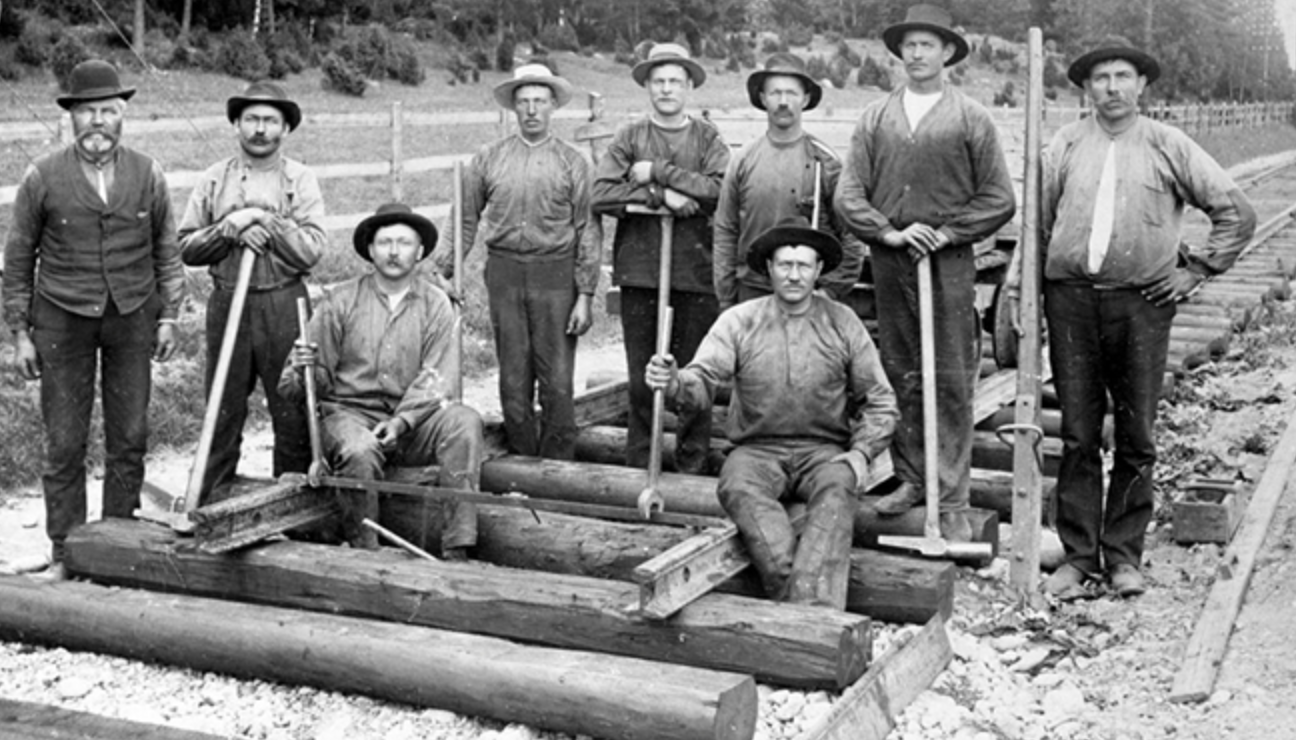Real urban wage in an agricultural economy without landless farmers: Serbia, 1862-1910
by Branko Milanović (City University New York and LSE) and Bosko Mijatovic (Center for Liberal and Democratic Studies, Belgrade)
This blog is based on a forthcoming article in ‘The Economic History Review’
—

Calculations of historical welfare ratios (wages expressed in relation to the subsistence needs of a wage-earner’s family) exist for many countries and time periods. The original methodology was developed by Robert Allen (2001). The objective of real wage studies is not only to estimate real wages but to assess living standards before the advent of national accounts. This methodology has been employed to address key questions in economic history: income divergence between Northern Europe and China (Li and van Zanden, 2012; Allen, Bassino, Ma, Moll-Murata, and van Zanden, 2011); the “Little Divergence” (Pamuk 2007); development of North v. South America (Allen, Murphy and Schneider, 2012), and even the causes of the Industrial Revolution (Allen 2009; Humphries 2011; Stephenson 2018, 2019).
We apply this methodology to Serbia between 1862 and 1910, to consider the extent to which small, peasant-owned farms and backward agricultural technology can be used to approximate real income. Further, we develop debates on North v. South European divergence by focusing on Serbia (a South-Eastern country), in contrast to previous studies which focus on Mediterranean countries (Pamuk 2007; Losa and Zarauz, forthcoming). This approach allows us to formulate a hypothesis regarding the social determination of wages.
Using Serbian wage and price data from 1862 to 1910, we calculate welfare ratios for unskilled (ordinary) and skilled (construction) urban workers. We use two different baskets of goods for wage comparison: a ‘subsistence’ basket that includes a very austere diet, clothing and housing needs, but no alcohol, and a ‘respectability’ basket, composed of a greater quantity and variety of goods, including alcohol. We modify some of the usual assumptions found in the literature to better reflect the economic and demographic conditions of Serbia in the second half of the 19th century. Based on contemporary sources, we make the assumption that the ‘work year’ was 200, not 250 days, and that the average family size was six, not four. Both assumptions reduce the level of the welfare ratio, but do not affect its evolution.
We find that the urban wage of unskilled workers was, on average, about 50 per cent higher than the subsistence basket for the family (Figure 1), and remained broadly constant throughout the period. This result confirms the absence of modern economic growth in Serbia (at least as far as the low income population is concerned), and indicates economic divergence between South-East and Western Europe. Serbia, diverged from Western Europe’s standard of living during the second half of the 19th century: in 1860 the welfare ratio in London was about three times higher than urban Serbia but by 1907, this gap had widened to more than five to one (Figure 1).

In contrast, the welfare ratio of skilled construction workers was between 20 to 30 percent higher in the 1900s compared to the 1860s (Figure 1). This trend reflects modest economic progress as well as an increase in the skill premium, which has been observed for Ottoman Turkey (Pamuk 2016).
The wages of ordinary workers appear to move more closely with the ‘subsistence basket’, whereas the wages of construction (skilled) workers wage seem to vary with the cost of the ‘respectability basket’. This leads us to hypothesize that the wages of both groups of workers were implicitly “indexed” to different baskets, reflecting the different value of the work done by each group.
Our results enhance provide further insights on economic conditions in 19th century Balkans, and generate searching questions about the assumptions used in Allen-inspired work on real wages. The standard assumption of 250 days work per annum and a ‘typical’ family size of four, may be undesirable for comparative purposes. The ultimate objective of real wage/welfare ratio studies is to provide more accurate assessments of real incomes between counties. Consequently, the assumptions underlying welfare ratios need to be country-specific.
To contact the author: bmilanovic@gc.cuny.edu
https://twitter.com/BrankoMilan
REFERENCES
Allen, Robert C. (2001), “The Great Divergence in European Wages and Prices from the Middle Ages to the First World War“, Explorations in Economic History, October.
Allen, Robert C. (2009), The British Industrial Revolution in Global Perspective, New Approaches to Economic and Social History, Cambridge.
Allen Robert C., Jean-Pascal Bassino, Debin Ma, Christine Moll-Murata and Jan Luiten van Zanden (2011), “Wages, prices, and living standards in China, 1738-1925: in comparison with Europe, Japan, and India”. Economic History Review, vol. 64, pp. 8-36.
Allen, Robert C., Tommy E. Murphy and Eric B. Schneider (2012), “The colonial origins of the divergence in the Americas: A labor market approach”, Journal of Economic History, vol. 72, no. 4, December.
Humphries, Jane (2011), “The Lure of Aggregates and the Pitfalls of the Patriarchal Perspective: A Critique of the High-Wage Economy Interpretation of the British Industrial Revolution”, Discussion Papers in Economic and Social History, University of Oxford, No. 91.
Li, Bozhong and Jan Luiten van Zanden (2012), “Before the Great Divergence: Comparing the Yangzi delta and the Netherlands at the beginning of the nineteenth century”, Journal of Economic History, vol. 72, No. 4, pp. 956-989.
Losa, Ernesto Lopez and Santiao Paquero Zarauz, “Spanish Subsistence Wages and the Little Divergence in Europe, 1500-1800”, European Review of Economic History, forthcomng.
Pamuk, Şevket (2007), “The Black Death and the origins of the ‘Great Divergence’ across Europe, 1300-1600”, European Review of Economic History, vol. 11, 2007, pp. 280-317.
Pamuk, Şevket (2016), “Economic Growth in Southeastern Europe and Eastern Mediterranean, 1820-1914”, Economic Alternatives, No. 3.
Stephenson, Judy Z. (2018), “ ‘Real’ wages? Contractors, workers, and pay in London building trades, 1650–1800’, Economic History Review, vol. 71 (1), pp. 106-132.
Stephenson, Judy Z. (2019), “Working days in a London construction team in the eighteenth century: evidence from St Paul’s Cathedral”, The Economic History Review, published 18 September 2019. https://onlinelibrary.wiley.com/doi/abs/10.1111/ehr.12883.

